Tol has two meanings in Korean. The most common meaning is a child's first birthday. It can also be used as a generic description for birthdays: Chut-tol (first birthday), Du-tol (second birthday), Seo-tol (third birthday), etc.
Traditional Tol Celebration
The traditional celebration had four major components:
1) Praying and giving thanks
Praying
Traditionally, Koreans would pray to Sanshin (a mountain god) and Samshin (a birth god, also called Samshin-halmuni "grandmother") on certain days following a child's birth (birth, 3-7 days after birth, and 100 days after birth). They believed that Samshin resided in the cloth surrounding a baby.
To prepare the praying table, the parents placed a bowl of steamed white rice, sea mustard soup (miyeok-guk), and a bowl of pure water on the table. Next to the table they placed samshin siru (layered red bean rice cake). This rice cake was not shared outside the family because they believed that sharing this particular item with people outside the family would bring bad luck to the child.
After the table was prepared, the child's mother or grandmother would pray with two hands together. Rubbing her palms together, she would ask for her child's longevity, wish luck to the mountain god, and and give thanks to the birth god. This was acomppanied by repeated bowing. Male family members were not allowed to join in thes ceremony. Only female family members were allowed to participate.
Seoulites perform this ceremony early in the morning on the child's birthday. Residents of some other areas do it the night before the birthday.
2) Making and wearing the birthday clothes
Tol-bok
The clothes worn for the tol (tol-bok) are colorful, dressy clothes. They differ depending on the child's sex. Both boys and girls wear a long tol-ddi (a belt that wraps around the body twice) for longevity and a tol-jumuni (pouch) for luck. Silk cloth is used to make the tol-jumuni, folded at the top with a colorful thread pull-string to open and close. For the child's longevity buttons are not used. (For more pictures of children's clothes, see the Traditional Clothes section.)
Boy's Clothes
-pink or striped jogori (jacket) with puple or gray paji (pants)
-striped durumagi (long jacket) and a blue vest printed with a gold or silver pattern or a striped magoja (jacket) and a jonbok (long blue vest) with a gold or silver pattern and a hongsadae (traditional belt) over it
-bokgun (black hat with a long tail)
-tarae-busun (traditional socks)
-yumnang (traditional round shaped pouch)
Girl's Clothes
-striped jogory (jacket)
-long, red chima (skirt)
-gold and silver printed jobawi (hat)
-tarae-busun (traditional socks)
-yumnang (traditional round shaped pouch)
3) Preparing the table and performing the Toljabee
Birthday Table
The parents prepare a special Tol table to celebrate the child's birthday. The main food includes ddeok (rice cakes) and fruits. Over 12 different kinds of ddeok are prepared, including paekseolgi (white steamed rice cakes), susu-kyongdan (rice cakes coated with rough red bean powder), chapsal-ddeok or chal-ddeok, mujigae-ddeok (rainbow colored steamed rice cake), songp'yeon (half moon shaped rice cakes), injulmi (coated glutinous rice cakes), and gyep'i-ddeok (puffed air rice cakes). Among these, paekseolgi and susu-kyongdan are always included. Fruits can vary according to the season of the birthday. Different colors of seasonal fruits can be prepared and displayed in a row. Also, a bowl of rice, sea mustard soup, and many other various foods can be displayed.
Along with food, other items are needed for holding the Toljabee event. Items such as large bundle of thread, a brush, a Korean calligraphy set, pencil, book, money (10,000 won bills), bow and arrow (needle, scissors, and ruler for girls) are arranged on the table to predict the child's future.
Table Setting
The birthday child will be placed at the table so that the other guests can face him or her. Parents often sit the child on the bolou (Korean traditional mattress) and several bangsuk (Korean cushions). Since the child is small, this allows for getting better pictures. For the background, a Korean traditional screen is used at the hotel or other banquet hall.
Toljabee Event
In this event, the birthday child goes around the table and picks up items that attract him or her. The child's future is predicted according to the what he or she grabs. After placing the child in front of the table, the child's father becomes the guide for the child to go around the table and grab whatever he or she wants. The first and second items the child grabs are considered the most important. Usually Korean parents place the items that they want the child to choose near to the edge of the table. The child's future is predicted according to the items:
-bow and arrow: the child will become a warrior
-needle and thread: the child will live long
-jujube: the child will have many descendants
-book, pencil, or related items: the child will become a successful scholar
-rice or rice cake: the child will become rich (some resources say choosing a rice cake means the child is not smart)
-ruler, needle, scissors: the child will be talented with his/her hands
-knife: the child will be a good cook
4) Sharing the food with guests and neighbors
Sharing
After the Toljabee, the parents share most of the Tol food with the guests and relatives. It is a Korean custom that when the guests and neighbors receive the food they say kind words and wish for the child's longevity and good fortune. They also give presents such as a gold ring, clothes, or toys.
Food Meanings
Each food type and other items on the table have specific meanings.
-paekseolgi (white steamed rice cakes) symbolize a pure and divine clean spirit and longevity.
-susu-kyongdan (rice cakes coated with rough red bean powder) are used to ward off evil spirits so that the child can grow without any disease. (Koreans believed that evil dislikes red color.) Koreans believed that if they prepared these two rice cakes for each birthday until 10 years old, the child would not fall down and would grow healthy.
-injulmi (sticky rice cakes) and chal-ddeok (sticky rice cakes) are prepared to wish the child to be tenacious and strong due to the stickiness of the rice cakes.
-songp'yeon (stuffed rice cakes shaped like a half-moon) Two different moon cakes are prepared. One is left empty and the other one filled. The empty moon cake means the child will grow with a big heart. The filled one means to grow to be wise.
-jujubes and fruit are for the child's descendants to multiply and prosper
-noodles and thread represent a long life
Presents
When Koreans are invited to the first birthday of a child, they often present a gold ring to the parents. Friends and colleagues collect money to buy a gold ring. However, the rings are not for the child to wear. Instead, the parents use them later to pay for child's education or other needs.
Protected: we’ve moved!
11 years ago













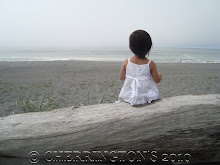
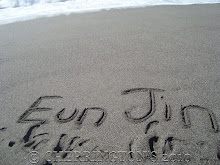
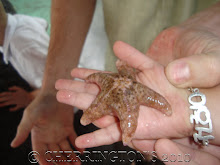

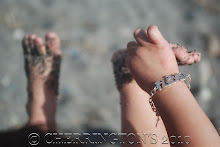
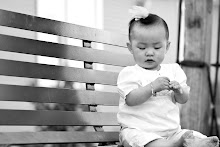
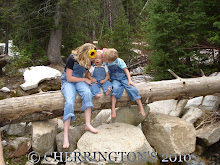
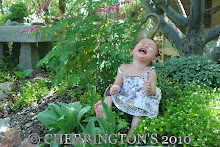
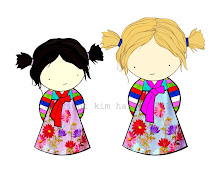





No comments:
Post a Comment